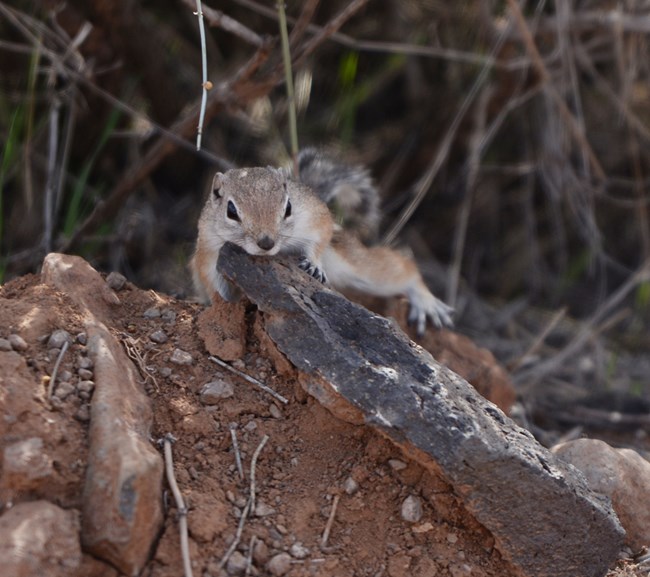
NPS/ Todd Miller Antelope ground squirrels dig burrows under desert shrubs like creosote and yucca to escape the hot desert heat and predators. These squirrels also practice “heat dumping” by spreading out on their belly in a shady spot. This action helps cool the squirrels body temperature during a hot summer’s day. However, this isn’t the only tool the squirrels use to keep tiny bodies cool in the desert heat. They also hold their tails over their bodies, providing their own shade as they move about. Small in size, the antelope ground squirrel is often mistaken for a chipmunk. The squirrel can be identified by their gray bodies with a white stripe on the side, light brown hind and forelegs, short bushy black tails, and white belly. |
Last updated: January 23, 2020
